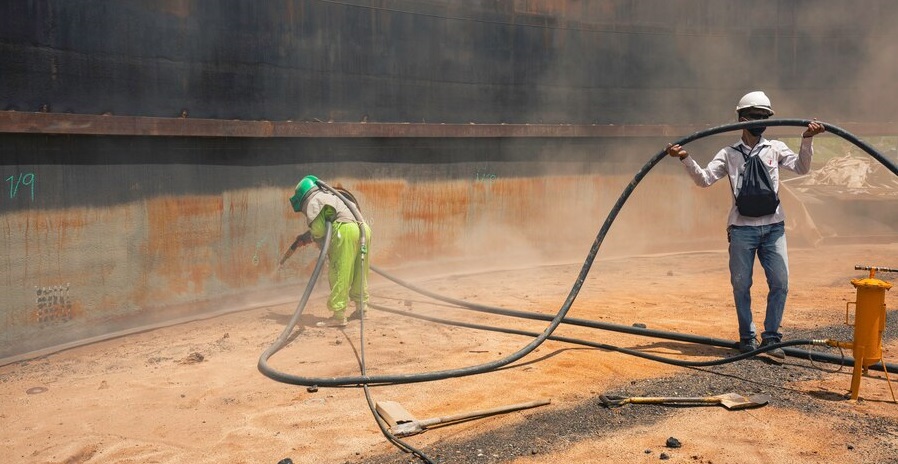
Sandblasting is the process of propelling an abrasive material at high speeds to clean, shape, or finish a surface. It’s an incredibly useful technique for many industrial and commercial applications, but it does require special equipment and safety precautions. In this article, we’ll explore what you need to know about sandblasting equipment and the benefits it offers!
Introduction to Sandblasting Equipment
If you are looking to remove paint, rust, or other debris from a metal surface, sandblasting equipment is a great option. This type of equipment uses high-pressure air to blast abrasive particles at the surface, which quickly removes the unwanted material. Sandblasting equipment can be used on a variety of surfaces, including wood, glass, and plastic.
There are many benefits to using sandblasting equipment. One benefit is that it is much faster than traditional methods of removing paint or rust. Additionally, sandblasting leaves behind a smooth finish that is often desired for painting or other projects. Sandblasting is also great for removing stubborn stains or build-up from surfaces.
If you are interested in purchasing sandblasting equipment, there are a few things you should keep in mind. First, you will need to determine the size and type of compressor that is right for your needs. Second, you will need to select the right type of abrasive media for your project. Lastly, you will need to choose the right nozzle for your application.
Types of Sandblasting Equipment
There are two main types of sandblasting equipment: portable sandblasters and cabinet sandblasters. Portable sandblasters are less expensive and easier to set up than cabinet sandblasters, but they are not as effective at removing paint or other materials from a surface. Cabinet sandblasters are more expensive, but they offer a more powerful blast that can remove even the most stubborn materials.
Both portable and cabinet sandblasters use compressed air to power the blast of abrasive material against a surface. The type of abrasive material used will depend on the type of surface being blasted and the desired results. Common abrasives used in sandblasting include silica sand, aluminium oxide, and glass beads.
The benefits of sandblasting include improved appearance, increased durability, and enhanced performance of surfaces. Sandblasting can also be used to prepare surfaces for painting or other treatments. When done properly, sandblasting is a safe and effective way to improve the look and function of many different types of surfaces.
How to Choose the Right Sandblasting Equipment?
Sandblasting equipment comes in a variety of shapes and sizes, so it’s important to choose the right one for your needs. The most important factor to consider when choosing sandblasting equipment is the type of material you’ll be blasting. There are three main types of blasting media:
-Abrasive: Abrasive blasting media is the most common type of blasting media. It’s made from a variety of materials, including glass beads, aluminium oxide, and garnet. Abrasive blasting is ideal for removing paint, rust, and other contaminants from surfaces.
-Non-abrasive: Non-abrasive blasting media is softer than abrasive media and won’t damage surfaces. Common types of non-abrasive media include plastic beads and soda ash. Non-abrasive blasting is ideal for cleaning delicate surfaces like glass or metal.
-Specialty: Specialty blasting media is designed for specific applications. Common types of specialty media include steel shot (for removing paint from metal surfaces) and baking soda (for cleaning fireplaces).
Conclusion
To sum up, sandblasting equipment is a powerful and versatile tool for any business. It can help you clean, prepare surfaces, remove rust and corrosion, and much more with precision and efficiency. Sandblasting also offers many safety benefits such as eliminating the need for harsh chemicals that may be harmful to workers or the environment. With all of these advantages in mind, it’s clear to see why investing in sandblasting equipment is a smart choice for any commercial operation.
